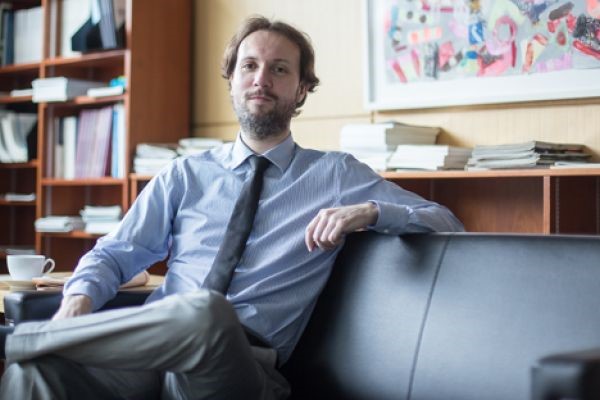
Feature on Nicolas L. Jacquet, Associate Professor of Economics
Associate Dean (Postgraduate Research)
School of Economics, Singapore Management University
Disentangling the cost-of-living crisis
Between COVID-19 and the Russia-Ukraine war, it is difficult to pinpoint the actual causes of soaring prices and possible recession across the world. Associate Professor Nicolas Jacquet, an economic theorist who specialises in labour, macro and monetary economics, discusses market forces and actions of the central bank dating more than a decade to uncover the real reasons behind the cost-of-living crisis we are witnessing right now.
As financial and real estate markets brace themselves for tough times ahead and inflation angst continues to grip consumers worldwide, most would blame the COVID-19 pandemic and the ongoing Russia-Ukraine war. However, some economists are arguing that the roots go much deeper and reach as far back as the 2008 Lehman collapse. Associate Professor Nicolas Jacquet details how a financial crisis that happened more than 10 years ago and the responses of central banks linger in today’s economy.
“The high inflation we are currently experiencing is certainly due, at least partly, to the supply chain disruptions arising from the pandemic or the war in Ukraine—but it could also be a hangover effect from central banks pumping a lot of liquidity into the economy since the 2008 collapse of the Lehman Brothers,” says Jacquet. Inflation tends to naturally occur after central banks inject a large amount of liquidity into the economy. He adds, however, that this did not occur in the aftermath of the financial crisis, which begs the question: “Why is it only happening now?”
One plausible explanation is that the liquidity went into specific asset classes, rather than the goods and services that households spend on thereby bumping up the asset markets. Jacquet explains, “When the central banks didn’t observe rapidly rising prices at that time, perhaps they felt that they could continue with their liquidity injections. This probably went on for far too long, and now we are paying the price for it.”
Getting to the bottom of this phenomenon is crucial, according to Jacquet, “because we now know that inflation can take a long time to show up after a central bank injection and it tends to be difficult and lengthy to tame; we must therefore be more prudent.”
Through the lens of an economist
As a theoretical economist, Jacquet’s research aims to solve problems in monetary and labour economics using mathematical models. For instance, this can be applied in labour economics to understand why workers transition between jobs and the obstacles hindering workers from finding suitable jobs efficiently.
He explains, “The beauty of economic models is that we can apply them to a wide range of scenarios to answer various questions,” adding that although many great minds in the past have been looking at these same issues, we now have the opportunity to see them through a completely new lens. Jacquet believes that with each unique perspective, the research question or phenomena can be better understood allowing us to find solutions for pressing economic and societal challenges.
Both a teacher and a learner
When asked about his role as an educator, Jacquet says that the classroom is a surprising source of new insights. He explains, “Because we are active researchers as well as teachers, we can share with our students the latest developments in the field and alternative perspectives that deviate from the standard textbooks.” He adds that new undergraduate students can question the basic elements of what is taught, forcing the teacher to rethink frameworks that might otherwise be taken for granted.
For this reason, Jacquet aims to have the conversation flow both ways. He says, “This makes learning more enjoyable for the students; at the same time, I’m learning from them as well.”
Employees shape the future of work
Another area experiencing new trends and changing assumptions is the labour market, where the pandemic has pushed many people to rebalance their life priorities. While it is not certain that these are permanent shifts, Jacquet says it is clear that companies need to adapt. “Workers are in short supply so the bargaining power currently lies with them; with new desires, firms will need to adapt and offer employees the flexibility they want.”
When thinking of how governments and firms might respond to these changes, returns to the long-term perspective, preferring to wait and observe rather than gaze into a crystal ball. Economics is very good at explaining what's happening, but not so good yet at predicting what might happen. Amid our response to the pandemic, for example, it is hard to predict whether workers’ current desires reflect what they will want in the future.

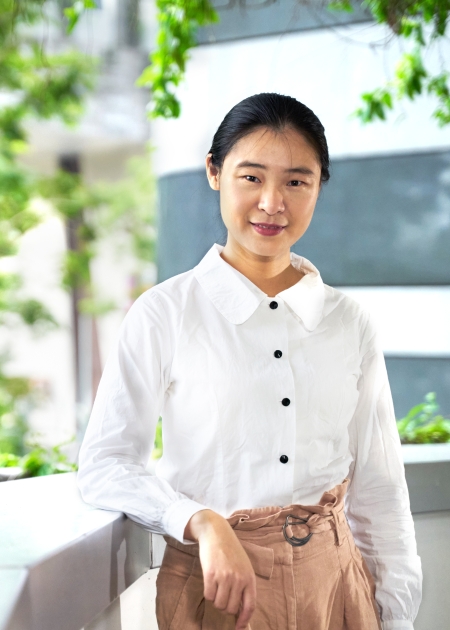
Feature on Jingyi Xue, Associate Professor of Economics
School of Economics, Singapore Management University
Axioms to making difficult decisions in an uncertain world
On a day-to-day basis, policymakers grapple with hard decisions. Associate Professor of Economics Jingyi Xue shines light on the guiding axioms that can assist policymakers in achieving outcomes that advance the wellbeing of all members of a society in aggregate.
When policymakers make decisions for a society, their choices affect the welfare of the collective whole. At the same time, these policy changes affect each citizen’s life in completely different ways due to the unique personal situations of every individual.
Through her research, Associate Professor Jingyi Xue sought to understand policymakers and their process of making social decisions. “When you’re making a decision for yourself, you can choose the option that makes yourself happy,” she says. “But policies will have different effects on each individual in society, and this is something that policymakers have to take into account while looking at the bigger picture.”
One of Xue’s studies investigated how resources in a society should be allocated in the face of uncertainty. For example, a government allocates budgets to local authorities to finance the construction of public facilities such as hospitals or roads, according to their respective local demands for such facilities. Since there is typically no way of accurately predicting these actual demands, the government has to rely only on the estimates of local demands to allocate these budgets. However, when we look back after the facilities have been constructed, we may find that the allocation based on the estimates may be far from the actual allocation needed. The lack of accuracy in predicting local demands means that some public facilities may be underutilised, while others may face an overwhelming demand.
“Most of the time, you only know the exact demand for the facility after it is built. But here’s the dilemma—public funds will need to be allocated before this uncertainty is resolved. What’s more, resources are scarce, and overallocation in one area may lead to shortages in another,” she explains, adding that since such mismatches are inevitable, it could even prove difficult to determine when an allocation is desirable.
In the paper, “Equal-quantile rules in resource allocation with uncertain needs”, Xue and her co-authors studied the axioms, or normative criteria, that can guide policymakers in their decision when allocating these resources. “For example, the resource monotonicity axiom says that if the amount of the resource to be allocated increases, no individual in the society should be worse off compared to before,” she says. “Some might receive more than others, but nobody should receive less.”
Social choice in an uncertain world
Xue’s research interest is in individual and collective decision-making under uncertainty, with one of her focuses on fair division in the face of uncertain claims.
She explains that there has been extensive literature on “how to divide a resource among agents who have conflicting claims on the resource”. However, the studies have largely been limited to situations with deterministic claims which can be accurately verified. Little has been done regarding situations in which agents have uncertain claims that arise from their uncertain needs for the resource, she says. “But that’s the case in many real-life situations—we often have to work with incomplete information and cannot reallocate resources thereafter, due to a variety of constraints.”
This area is becoming increasingly important, given the unpredictability of the world we now live in. “For example, during the COVID-19 pandemic, there were limited units of ventilators, and authorities needed to make a call on how many to allocate to each hospital. These are tough decisions to make,” she says.
Balancing trade-offs
Some key applications of her research are in healthcare and emergency management. For example, international emergency management organisations such as The International Red Cross need to determine the quantity of medical supplies to distribute across assistance centres around the world in preparation for an emergency or disaster that has yet to take place. The challenge in this situation is to find a desirable way to allocate resources under uncertainty, that is, before the emergency occurs.
“Since emergency response is time sensitive, we cannot rely on resource reallocation after the emergency occurs,” says Xue. She explains that it could be too time-consuming or too costly to redistribute medical resources after the uncertainty is resolved.
Xue elaborated on how medical supplies, which are often limited in quantity, should be allocated to various assistance centres and the conundrum of having to “sacrifice” some places when allocating more to others. “When dealing with uncertainties, we have to consider the trade-offs that come with every decision we make,” she says.
If the amount of the resource assigned to an assistance centre turns out to exceed its realised need, some of the resource is wasted. On the other hand, if the assigned amount falls short of the centre’s realised need, it will not have enough resources to meet the demands of the injured. In the case of healthcare and emergency services, such outcomes are much harder to deal with. Xue elaborates, “Comparatively, the miscalculation of the demand of a public library, for example, has less serious impact. The library could end up being underutilised or overcrowded—but this is a mild quandary compared to a situation where lives are at stake.”
Despite the difficulty of these decisions, they must still be made. This is where economists including Xue offer valuable insights on how the best outcome—one that advances the wellbeing of all individuals in aggregate—can be achieved. “It’s a very relevant issue, and what makes this research area so meaningful,” she says.
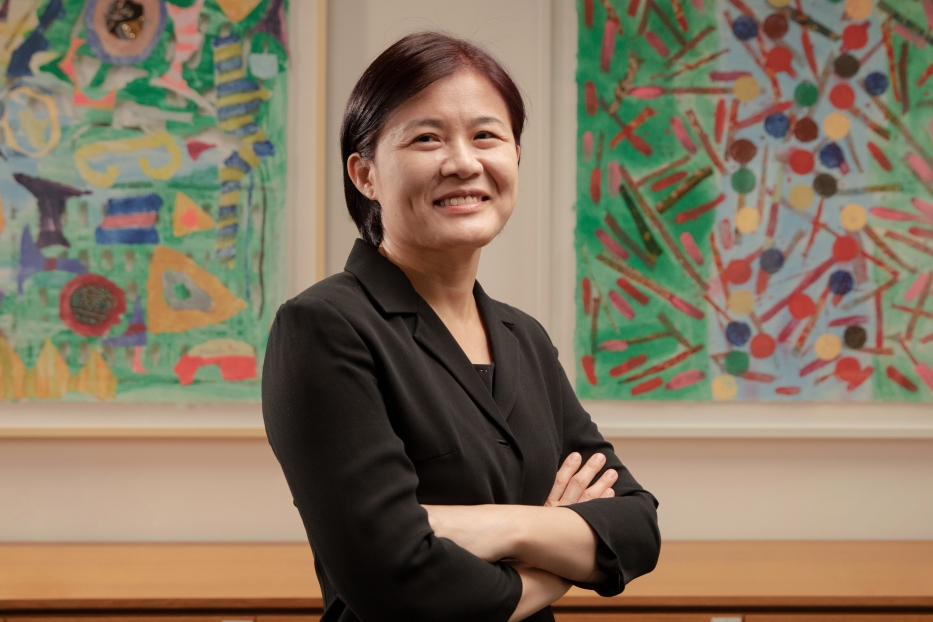
Feature on Chang Pao-Li, Associate Professor of Economics
School of Economics, Singapore Management University
Looking beyond supply and demand in global trade
International trade and global supply chains have pushed globalisation like never before. But what exactly determines which goods arrive in your country? Factors impacting the global value chain are not merely based on supply and demand; sometimes, they can be shaped by the latest K-drama captivating audiences all over the world. Associate Professor Chang Pao Li sheds light on the nuances of global value chain and how Asia can take centre stage in the next phase of globalisation.
When considering Asian skincare products, South Korean brands undoubtedly lead the way with a vast array of innovations such as bee venom, snail slime, and pigskin collagen. It’s not an exaggeration to say that K-beauty is to cosmetics, what K-drama is to television. Since the 1990s, South Korea has swept the world with its cultural influence, using the Korean wave (or K-wave/Hallyu wave) as a soft power instrument.
The K-wave has significantly boosted South Korea’s bilateral trade flows with other countries. According to data from South Korea’s Ministry of Food and Drug Safety, in 2020 the country’s cosmetics trade surplus exceeded 6 billion USD. This makes South Korea the third-largest cosmetics exporter, behind only France and the United States of America.
Chang Pao Li, Associate Professor of Economics at Singapore Management University, is currently studying the factors that drive international trade and the global value chain. “One finding from my research is that while the K-wave promoted exposure of South Korean products in various categories to consumers around the world, the effect was stronger in women’s products compared to men’s products,” shares Chang, adding that consumers were more interested in South Korean products that are more distinctly associated with the K-wave.
Chang continues, “This is interesting because we often think about trade on a more general basis, in terms of supply and demand, policies, and so on. However, from this case study we can really see how the global value chain is not that linear – consumer preferences can shift because of cultural consumption and soft power.” Quantifying the effect of such shifts in trade flow is one focus area of Chang’s research in the global value chain.
Shedding light on the positives of global trade
Most recently, Chang is investigating the welfare effects and distributional consequences brought about by trade liberalisation efforts of the World Trade Organisation (WTO). Compared to when the GATT (the predecessor of the WTO) was first initiated in 1947, the world economy now is much more liberalised. While it has been suggested that global trade negatively impacts the environment, labour standards, and exacerbates income inequality, Chang’s research has reached the opposite conclusion. “WTO-induced liberalisation has actually helped to narrow the income inequality across countries. This is a line of research I have been consistently pursuing, and which I find very meaningful,” she says.
Where Singapore stands in the global value chain
By uncovering the nuances in the global trade ecosystem, Chang’s research can help advise on the actionable steps that countries can take to gain a competitive advantage. In one project, she looked at Singapore's aggregate and bilateral exports to various trading partners and calculated the proportions of foreign- versus local-contents in Singapore’s gross exports. The aim is to quantify or identify Singapore’s position in the global value chain.
Chang explains, “If 1 dollar of Singapore’s gross exports consists of 60 percent foreign value-added, and we compare this to Japan, where only 10 percent of its gross exports are foreign value-added, we may say that Japan is positioned more upstream and Singapore is more downstream in the global value chain,” in the sense that Singapore’s production of gross exports embodies a greater extent of foreign contents and is positioned closer to the final demand.
Many might be concerned about the fact that Singapore is placed relatively downstream, and whether that carries implications. Chang asserts that these classifications need to be taken into context. “In general, I don’t think it’s something to be alarmed over. Some sectors in Singapore, such as computer electronics, are more upstream; whereas when it comes to professional and business services, it’s naturally more downstream,” she explains.
Instead of looking at upstream and downstream as being a value marker, it should be taken as insights that inform our next steps to create an extra edge for Singapore’s economy. Chang adds, “For example, Singapore could move towards upstream by leveraging talent and resources to focus on more niche areas such as Research and Development.”
Asia as the centre
A vibrant regional trade ecosystem is useful in helping to stimulate the economic growth of participating countries. It also enables developing countries to overcome divisions – such as those that impede the flow of goods, services, capital, and other resources – that could limit their growth.
“In Asia, the integration of value chain production across countries is quite closely knit. For example, Taiwan, Korea, Vietnam, and Malaysia are highly reliant on foreign contents in the production of their exports, while their local value-added and contents are also heavily used by the other Asian countries. To some extent, this could be partially attributed to their production activities, as well as their connection with the Chinese economy,” Chang says.
According to McKinsey, by 2040, Asia could account for more than half of global GDP and about 40 percent of global consumption¹. While it’s often seen as a fragmented region, as economies in the region become increasingly integrated with each other, its growth becomes more resilient, diverse, and sustainable.
“It’s definitely exciting times ahead for Asia, and we expect the region to play an extremely important role in driving the next phase of globalisation in the years to come,” Chang concludes.
1. The future of Asia: Asian flows and networks are defining the next phase of globalization
https://www.mckinsey.com/featured-insights/asia-pacific/the-future-of-asia-asian-flows-and-networks-are-defining-the-next-phase-of-globalization
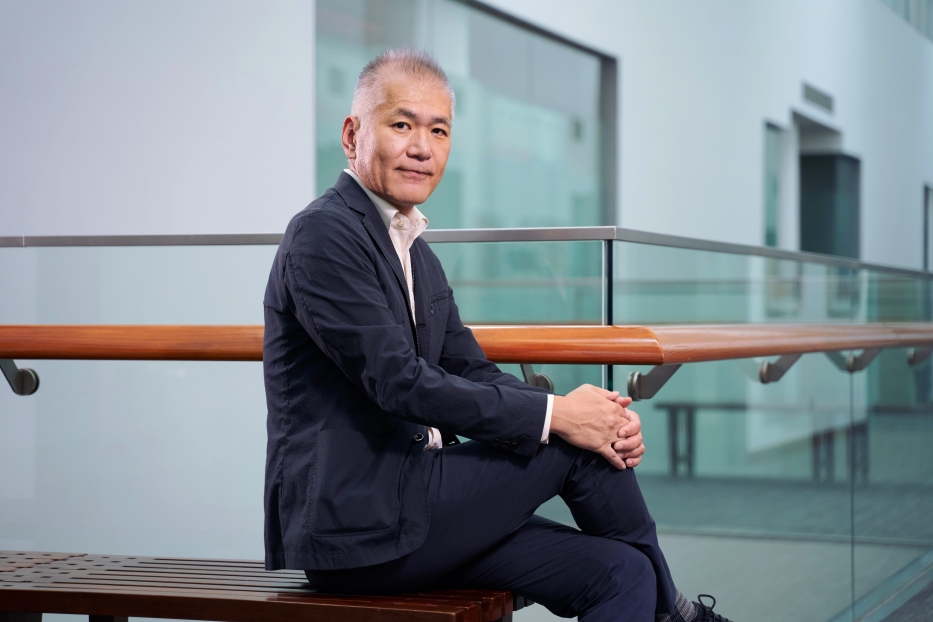
Feature on Atsushi Kajii, Visiting Professor of Economics
School of Economics, Singapore Management University
Finding sunspots & how our expectations can shape economic futures
It’s not just our actions that can have an impact on the real world. Professor Atsushi Kajii’s research focuses on sunspots, exploring the key role of human expectations about the future, and how they can shape economic realities.
Suppose you're living on a harmonious, peaceful island, where everyone grows crops as they wish, and then sells or exchanges these products.
One day, for some reason, people on the island start to worry about how the future prices of their crops might fluctuate. Even though such concerns have no basis, these thoughts may start to influence their farming activities. What could happen is that as people start reducing the amount of crops they plant, and the prices indeed start to shift.
“As it turns out, our expectations of future scenarios do have an impact on the real world,” says Atsushi Kajii, Visiting Professor of Economics at Singapore Management University. “You might then say, ‘So I was right!’ But in reality, this is a self-fulfilling prophecy.”
The above-described phenomenon can be encapsulated in the economic concept of sunspots, which is Kajii’s key research area. “It is the idea that arbitrary changes in expectations might influence the economy,” he explains.
In economics, a sunspot refers to an extrinsic random variable; that is, a random variable that does not affect economic fundamentals – such as endowments, preferences, or technology. The whimsical name was coined by a 19th-century economist William Stanley Jevons, who attempted to correlate business cycle patterns with sunspot counts on the actual sun. This was on the grounds that they might cause variations in weather and thus affect agricultural output. While the sun does indeed influence agricultural production, subsequent studies have found no evidence for the hypothesis that the sunspots influence the business cycle.
Theory of labour to theory of value
Kajii shares that he stumbled upon his field of research – economic theory – by chance. In college, he had studied Marxism. One fateful day, he was looking for resources on the Marxist theory of labour and discovered a thin book titled “The Theory of Value”. “Judging by the number of pages, I thought it would be a quick way for me to understand the Marxist concept of labour value theory. As it turns out, it was on mathematical economics.” He was intrigued by the book, and the rest was history.
Kajii says economic theories aim to understand the foundation of economics, and how economics work, or should work. “We are not very practical people, because I wouldn’t be able to tell you which financial asset you should put your money into,” he jokes. “Rather, my field of work provides the fundamental idea of how we should think, and benchmarks ideas that would be augmented by real-world analysis. For example, we explore the general value of allocating money to various financial instruments. Why is it a good idea to invest? What’s the basis of having a public policy on vaccinations? These are some areas that we seek to answer.”
One of the major questions in mathematical economics is how markets work, and researchers often use sophisticated mathematical models to study it. Kajii explains that this is because language can be biased, while mathematics is consistent and objective, thereby allowing the mathematical model to be applied to a wide range of topics.
Kajii’s most cited paper, titled “The robustness of equilibria to incomplete information”, is on game theory, which is a theoretical framework for conceiving social situations and strategic interactions among rational agents. “Suppose you're a researcher in an environment in which people understand and interact with one another, but as an outsider, you wouldn’t know the details of these individuals’ wellbeing. This means that you have limited information about these people, and therefore, your prediction and your model is not perfectly accurate,” he says.
However, Kajii elaborates, the key question is whether you are able to come up with a prediction that is robust enough, such that the missing or unknown information doesn't mess up your prediction or forecast completely.
What AI cannot replace
With the recent advancements in technology, many businesses across all sectors are leveraging artificial intelligence (AI) for a wide range of use cases, from speech recognition and image classification, to genomics and drug discovery, and even forecasting and prediction. On whether such digital tools would be useful in his area of research, Kajii believes that it is unlikely AI can replace the role of economic theorists.
He raised the example of AlphaGo developed by Google, which was the first computer programme to defeat a professional human Go player, as well as a Go world champion. The new version of AlphaGo, called AlphaGo Zero, was even more revolutionary. Kajii explains, “AlphaGo studied all human records, which means that it evolved over human ideas to eventually win human players at the game. But AlphaGo Zero was told only the rules of the game and it figured out how to win on its own.”
However, the tricky thing is that AlphaGo Zero cannot itself explain why it’s so strong. Kajii says, “Even though AI will replace the human instinct, or tasks that we learn through experiences and rules, they are not able to replace theories or philosophy.”
He concludes, “Be it economics or mathematics, or in any other disciplines, humans will always be much better at theorising than AI. Perhaps in future there can be a division of labour in which human beings focus on philosophising, while AI can be used to lessen the years of experience required to learn or do a task.”
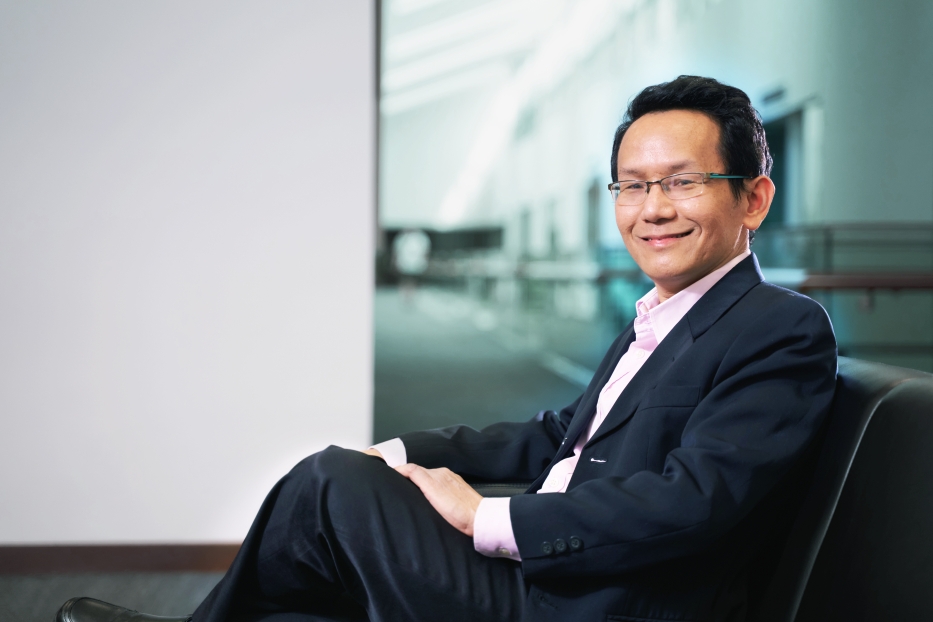
Feature on Ho Kong Weng, Associate Professor of Economics (Education)
School of Economics, Singapore Management University
Creating opportunities to enhance social mobility in Singapore
An inclusive society requires the right policies to be in place, but at the same time, it is important that individuals cultivate a sense of altruism and care for those around them. Through his research and teaching, Associate Prof Ho Kong Weng is shedding light on how we can better empower less fortunate youths to climb the social ladder.
Since its independence in 1965, Singapore has achieved impressive economic growth, along with a high level of upward mobility. But more challenges lie ahead as we enter a new normal and much more uncertain world.
“As a small state and an open economy, the key to Singapore staying competitive is to remain open – be it to new ideas, technologies, capital, or foreign talents,” says Ho Kong Weng, Associate Professor of Economics at Singapore Management University. He emphasises that the influx of foreign human capital is an especially important factor. “We have to be open-minded, so that foreign professionals can embrace Singapore as their new home, and feel like they want to contribute to our society.”
Ho’s research interest covers both the macro aspects of the economy, as well as at the family level, with a focus on intergenerational mobility, and the inequality of Singapore society and economy.
He explains that the economic growth of Singapore has to be inclusive, otherwise, with a skill-biased technological progress, it is inevitable that inequality will rise. Therein lies the importance of studying the transmission of economic and non-economic capital across generations. In particular, it is crucial to understand and enhance the opportunities provided for young people, especially those from disadvantaged family backgrounds, he says. In his work, Ho’s work explores how these individuals can move up the social ladder and improve their economic status relative to their parents. “This is a crucial indicator of the wellbeing of a society – that people have access to opportunities that can lead them to achieve social mobility regardless of their economic and social background.”
Sharing a deeply personal and powerful anecdote, Ho reveals that his own parents were not educated, having only completed a few years of primary school education. “But despite that, their son holds a PhD. This shows that education is actually an enabler for individuals in Singapore who come from a less well-to-do background, and my own experience is an example.” He was therefore inspired to study intergenerational social mobility, in the hope of helping more young people in the same way.
Undercurrents of inequality
In one of his papers, Ho examines the challenges to social mobility in Singapore by using a theoretical model which endogenises both inequality and upward mobility. He explains that while we can check and quantify inequality over time, this approach presents only a static notion of disparity within a society.
“In order to better the lives of individuals within a society, we need to identify the undercurrent that is leading to persistent inequality. That way, we can craft policies to address the underlying issue and provide lower-income families with more opportunities to climb up the social ladder,” Ho says. In the paper, he analysed key past events and future scenarios, including the past influx of and future reduction in migrant unskilled workers, preference shifts towards equity, early education intervention, and future jobs.
The study also proposes that social wellbeing should be used as the yardstick for various social mobility strategies. This is because the research found that non-economic aspirations such as family-oriented and altruism-oriented life goals matter significantly to youths in Singapore. For example, government policies can concentrate on fostering a caring society with community support and family participation. Ho elaborates that policy alone is not sufficient for creating a better, more inclusive society. “We still need to cultivate a sense of altruism, and that matters much more to the social compact of the society. After all, economic prosperity is not the only thing that we should pursue individually or as a nation. We need to bear in mind that there are more important things.”
Lessons for next gen economists
Over the years, Ho has received numerous Excellent Teacher Awards. He says that he enjoys the process of learning and it’s something he would like to impart to his students. He encourages them to be curious about what’s around them, and always think about how to relate economic concepts to the real world. “It’s not just about mathematical models, although for economics students, that should be a given. My philosophy is to cultivate in them a kind of intuition in explaining economic or even non-economic phenomena through the lens of an economist.”
For instance, in exams Ho would set questions that required his students to provide intuitive explanations based on mathematical frameworks. “I wouldn’t ask them to derive mathematical theorems or prove XYZ – that’s not difficult if you just sit down and drill yourself on how to do it mechanically. An important education in economics is one that teaches them how to explain the models, and why or how they are using them.” This is an important skill that will benefit students in the long run, and way beyond school, he says.
Another lesson Ho hopes to instill in his students is a sense of empathy and awareness for people around them. He shares that most of them come from middle-class families and only a minority are from less well-to-do backgrounds. “In my teaching, I am conscious of letting them know about the challenges faced by people coming from the lower income groups. Hopefully they’ll remember what I’ve said and think of research as a way to help the poor move up the social ladder to create a better, more inclusive society,” he says.
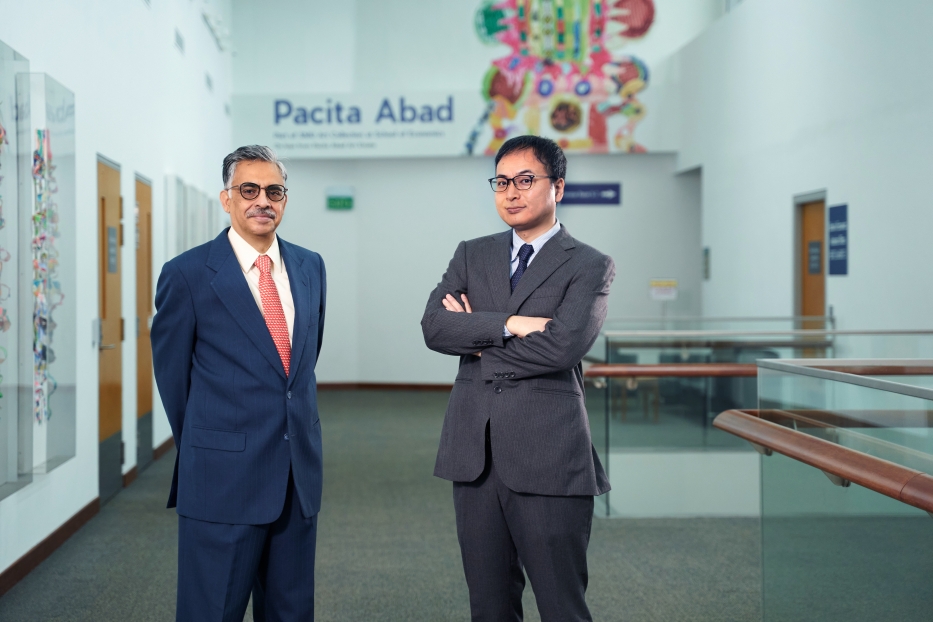
Feature on Takashi Kunimoto, Associate Professor of Economics & Shurojit Chatterji, Professor of Economics
School of Economics, Singapore Management University
Enabling more robust institutional design
A fundamental theorem in mechanism design posits that the only institution that can elicit truthful information in all situations is dictatorships. Through their research, Takashi Kunimoto and Shurojit Chatterji explore novel and robust methods of institutional design that address this outlook.
It’s an age-old question – are humans inherently selfish? For centuries, thinkers have proposed that each individual seeks to advance their own gains, compete against one another for resources and to accumulate power and possessions. One school of thought even suggests that human beings must form social contracts and governments to prevent their selfish, violent tendencies from taking over.
We see this interesting dynamic play out in a subfield of economics known as “mechanism design”. Takashi Kunimoto, Associate Professor of Economics at the Singapore Management University (SMU), explains that mechanism design studies the construction of mechanisms that induce socially desirable outcomes in the presence of rational but selfish agents. “Essentially, it is a tool that allows us to think about institutional design,” he says.
In mechanism design, economists act as institutional engineers, choosing an outcome and then arranging a set of market rules and conditions to achieve it. “Think about it as a group of people trying to coordinate the actions of the collective whole in certain directions, so that we can somehow achieve the optimal outcome, or maximum wellbeing, for everyone in the group.”
Shurojit Chatterji, Professor of Economics at the SMU, elaborates that mechanism design is central to economics – which loosely speaking, is the study of institutions that are useful in allocating resources in an efficient way across society. “However, any such institution has to confront the fact that individual preferences, which efficiency is based on, are their own private information. This data has to be elicited from multiple agents. The dilemma is that once these agents understand the rules of an institution, they are liable to misreport their preferences in order to seek self-benefit,” he says.
This brings about tension between the players, who only care about their own private utility, and the social planner, whose aim is to reach a socially desirable outcome. The underlying question, therefore, is how to incentivise these agents to cooperate, in order to reach desirable social outcomes.
Getting around a grim theorem
Much of the work in the realm of mechanism theorem is aimed at addressing the famous fundamental Gibbard-Satterthwaite Impossibility Theorem. Chatterji explains, “This theorem states that if you do not put any a priori structure on preferences of agents, then the only institutions that will elicit truthful information about their preferences in all situations are going to be dictatorships.”
Therefore, the economics literature that evolved from this negative result has focused on studying scenarios where not all preferences are admissible. Kunimoto adds, “This is an area that I’m currently concerned with in my research as well. After all, most people would prefer not to live within dictatorships, where misrepresenting their preferences are inconsequential. We want to give them the freedom of choice while encouraging them to offer personal information that helps in institutional design. So, the big question is: What would be a good characterisation of alternative scenarios where one can move away from dictatorship and form more ideal institutions and mechanisms?”
Finding a robust way around
Kunimoto and Chatterji recently successfully clinched the Singapore Ministry of Education (MOE) Academic Research Fund (AcRF) Tier 2 grant for a joint project titled “Robust Design of Institutions: An Implementation Theory Approach”.
Explaining that the research proposal focuses on the interaction among agents that occurs within the framework of an institution, Kunimoto says, “In this case, we are assuming that the central authority, which is the social planner, has the power to commit to an institution – that is, a specific set of rules that govern what actions agents may take, and what the consequences of these actions are.”
However, the authorities will not be able to dictate the outcomes that result, since these are determined by the actions agents take and cannot be a priori controlled. Chatterji explains that hence, to achieve socially desirable outcomes, the design of the institution has to provide the agents with the right incentives.
“This means that the type of information we want to elicit from agents should not be too demanding. We must find ways to strike a balance between asking for too much detail and making do with more fundamental basic information on preferences. This is because when we ask for too many details, people sometimes become suspicious and are more likely to willingly or inadvertently misrepresent their true preferences,” he explains.
The technological interest of mechanism design
In recent years, computer scientists have become increasingly interested in leveraging the concepts of mechanism design for the design of software programmes. Chatterji says, “There is now feedback between literature in the two areas, and in fact, a lot of research in mechanism design these days is actually carried out by computer scientists.”
An example would be in the case of self-driving cars. “An autonomous car is set to fly on the roads, and it is imaginable that the car may have to make a decision at some point between colliding into a baby or colliding into an elderly person. The thing is, on what basis should the autonomous vehicle decide which is a better option?” he asks.
Inevitably, the topic now overlaps with social choice and ethics, as these ideas and choices will have to be operationalised and put inside the algorithms that are driving the machine. He adds, “Whenever you try to decentralise decision-making, you also have to provide the right incentives for making the correct decisions. But what the correct decisions are, is a matter of debate.”
Reflecting on how the realm of technological development has become an area where ethics, social choice and philosophy are all intertwined together, Chatterji says, “It will be interesting to see how they evolve together over time.”
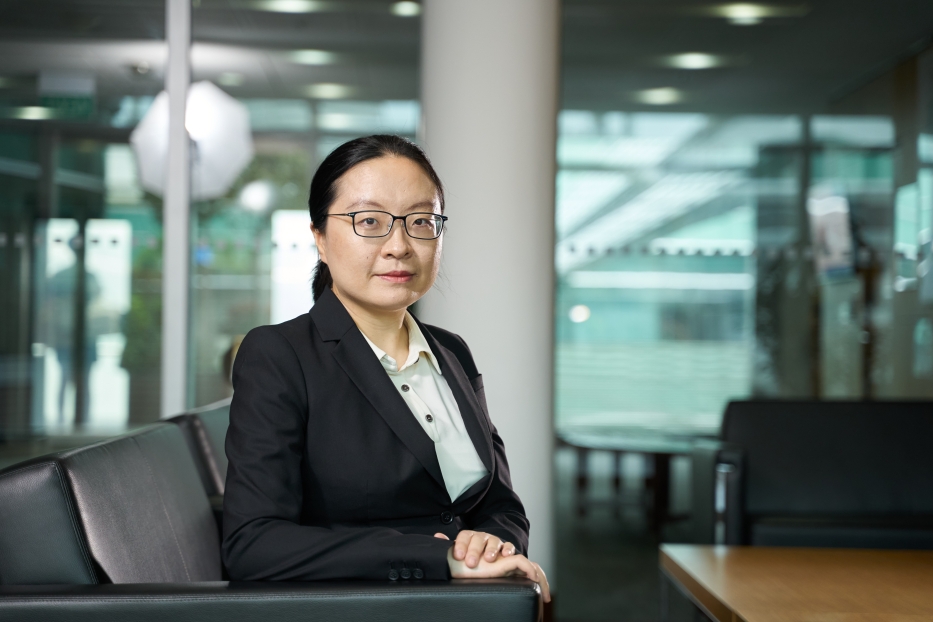
Feature on Zhang Xuan, Assistant Professor of Economics
School of Economics, Singapore Management University
Addressing the challenges of an ageing population through health economics
Data can unveil surprising insights regarding the impact of an ageing population on healthcare systems. Through her research, Zhang Xuan, Assistant Professor of Economics, looks at how healthcare components in society can be better structured to deliver optimal benefits to citizens.
With increasing life expectancy, declining birth rates, and lower mortality, the world’s population is ageing – and at a rate much faster than ever before. By 2050, the global population of those aged 60 years and above is set to double to 2.1 billion. Between 2020 and 2050, the number of persons aged 80 years or above is expected to triple to 426 million.
Many countries are facing major challenges in ensuring that their health and social systems can keep up with this demographic shift. One important aspect is the healthcare being rendered to the elderly.
“It is not just the patients who are ageing – the same goes for the supply side as well, for example, the primary care physicians,” says Zhang Xuan, Assistant Professor of Economics at Singapore Management University (SMU). “In the coming decades, more and more physicians are going to retire, due to the same population ageing trend. This could have an impact on the patients that they are taking care of.”
In a recent study that leverages data from the United States, Zhang evaluated the effects of the retirement of physicians on the costs and quality of health care on elderly adults. “What I found was that even though patients may anticipate the retirement of their primary care physicians, they will not take action until the physician is actually retired. The transition is not smooth at all.” She found that there is a huge dip in primary care for these elderly patients after their physicians step down, and some patients cannot find a replacement physician even five years afterwards.
Some patients may even stop using primary care completely and turn to specialists, resulting in significant increases in medical costs. “There is also wastage of resources; we found that the retirement of the solo primary care physicians results in higher costs to their patients, as compared to the retirement of physicians who work in a group practice. This is often due to the medical records of the patient not being handed over to a new primary care physician in a private setting.”
However, an interesting observation was that there tends to be a surge in the detection of new chronic conditions such as depression, osteoporosis, and Alzheimer’s disease in the patients. “This is probably due to them getting a second opinion on their health,” Zhang says. “When a primary care physician has taken care of her patient for quite a long time period, she may not be able to notice some change in her patient. It could be easier for a new physician to notice some abnormal symptoms of certain conditions.”
The early detection turned out to be a benefit of this disruption in health care, and points to the importance of getting second opinions when it comes to diagnosis she elaborates.
Data lends a helping hand
Zhang’s key research area is on health economics. She explains that there are two main aspects to her field. The first is on the behaviour of individuals that can be related to the accumulation of their health capital. “For example, the things you eat, the activities and lifestyle you engage in, and the healthcare you receive are channelled into the building of your human capital, of which health is a component.”
The second aspect of health economics, which Zhang’s research focuses on, is on the interaction between the components of a healthcare system. She deep dives into the relationship between the demand side, which consists of the patients, and the supply side, comprising the physicians, hospitals, and pharmaceutical companies. “My interest is in how these elements interact with each other, and with third party components such as health insurance companies as well as the government which acts like a regulator within the system.”
Explaining her passion for health economics, Zhang shares that in her view, health economics is now a pressing issue. “Given the current global ageing population, the overall healthcare spending in society is expected to increase. This means that we need to be smarter in how we allocate our resources to contain the increase in healthcare spending, while ensuring a high quality of care for our elderly population.”
Another reason why she enjoys health economics is because in her work, she gets access to real-world data. “These data come from various sources, such as surveys, government agencies, and health insurance companies. They provide great insights and opportunities to address what is really happening in the healthcare industry and how we can better improve the systems.”
Maximising resources for the elderly
In addition to ageing populations, the global pandemic also highlighted the need for smart spending in healthcare, Zhang says. “This means using minimal resources to try to achieve as much as we can.”
One example would be marginal hospitalisations, where it’s not entirely clear whether, on a case-by-case basis, it is cost-effective to admit certain patients. She explains, “It’s not easy, but we can work on creating better decision-making processes to decide whether certain patients actually need to be hospitalised. We want to make sure that inpatient resources are reserved for someone who needs it more.”
Another opportunity is in telemedicine, which has become much more prevalent given social distancing measures during the pandemic. “While telemedicine can help in freeing up healthcare resources, not all conditions can be efficiently addressed in virtual settings. We need more understanding on that.”
Highlighting the important role of technology in advancing the future of healthcare, Zhang reiterates the usefulness of data in assisting economists and policymakers in crafting suitable guidelines moving forward. “The availability of data and the capability to now process them holds great promise in advancing healthcare systems. It also reveals fascinating insights that can help us tackle existing challenges of healthcare and the ageing population. This is one of the main motivating factors of my work in the health economics space,” she says.
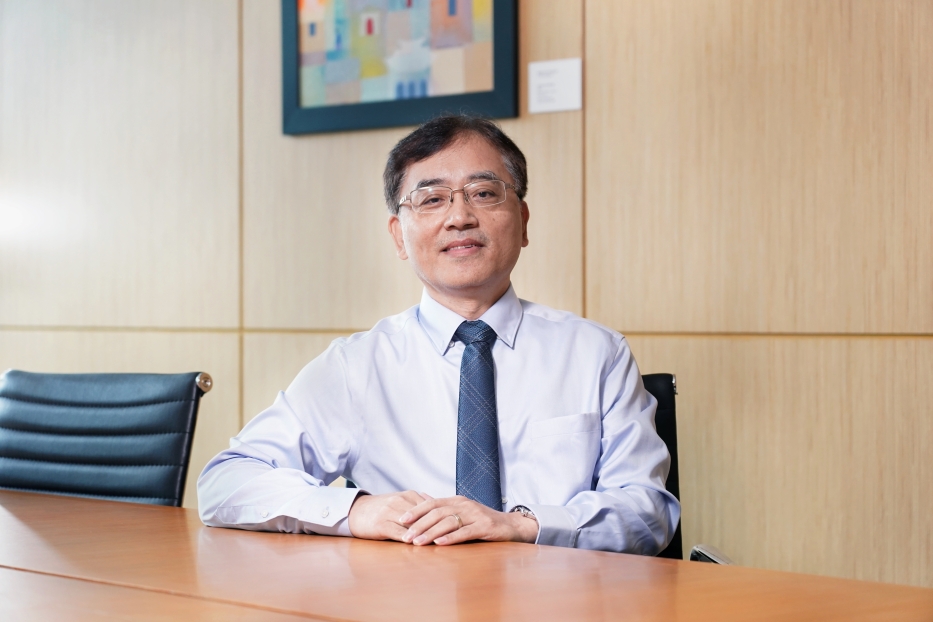
Feature on Yang Zhenlin, Professor of Economics & Statistics
School of Economics, Singapore Management University
Making space for econometrics analysis
Economic phenomena are bound by space and time. However, the traditional models of econometrics often neglect spatial relationships in their analyses. Through his research, SMU Professor of Economics and Statistics Yang Zhenlin explores the phenomena of how “near things are more related than distant things”.
Population density is a double-edged sword. Empirical research has shown that the more populated an area is, the higher the innovative output of its economy. On the one hand, the proximity of a population plays an important role in creating the flow of ideas that can generate innovation and growth. But on the other hand, when two people are close enough to change creative ideas face-to-face, they are also close enough to contract a contagious disease.
“This downside of cities was an imminent concern of city governance at the outbreak of the COVID-19 pandemic,” says Yang Zhenlin, Professor of Economics and Statistics at Singapore Management University (SMU).
In one research, Yang studied the impact of urban density, city government efficiency, and medical resources on COVID-19 infection and death outcomes in China. The study used a data model to map out the simultaneity of infection and death outcomes, the spatial pattern of the transmission, the inter-temporal dynamics of the disease, and the unobserved city- and time-specific effects. He explains, “We found that population density does indeed increase the level of infections. But fortunately, government efficiency was able to significantly mitigate the negative impacts of urban density.”
Yang’s research focus is on spatial econometrics, a subfield of economics in which the theoretical models used leverage spatial data that includes coordinates or distances between the units. The essence of spatial econometrics is Tobler's First Law of Geography, that “everything is related to everything else, but near things are more related than distant things.”
Elaborating on the difference between traditional theoretical methodologies and those used in spatial econometrics, Yang says, “Classical analysis methods are fairly straightforward – for instance, given one unit increase of your education, you would expect that you will earn this much more in the future. This is a very clean and neat explanation.”
It’s when the spatial econometrics lens is applied that things get much more complicated. “In reality, a person’s future performance not only depends on their personal characteristics, but also their social capital, and their peers’ social capital. Everything is interconnected,” he adds.
The economics of space
Yang shares that the field of spatial econometrics has received increasing attention in recent years, due to growing recognition that the standard econometrics technique often fails in the presence of spatial interaction. This applies to key issues in economics including demand analysis, labour, public economics, and the international economics of trade. “For example, when two countries have a huge trade volume between them, they are inevitably somehow dependent on each other. This economic relationship should take geography into account, meaning the proximity of the two countries and how it affects the nature of their trading relations.”
This concept may seem more apparent in fields such as agriculture or environmental economics, but now it’s being increasingly applied to areas such as finance as well. Yang says, “As a trader, when you invest in 100 stocks for example, you would be analysing and tracking their movements over time. But these stock movements don’t happen in their individual vacuums; there is definitely a certain level of dependence among a group of similar stocks. This is something that more people are starting to take into account when they do financial analysis.”
One interesting application of spatial econometrics is on housing prices. For example, in the US, the median price of an apartment in one county is dependent on certain economic factors, but at the same time, it is affected by the price in the neighbouring county. “Traditional statistical methodologies would have made independent observations about the prices in the two counties – but spatial econometrics examines the correlations between the two pricing levels,” he explains.
Putting housing policy effects into perspective
Given the limited land resources in Singapore, short-term policy interventions are key to managing the demand for public housing in the island state. In one research, Yang applied the spatial econometrics technique to examine the short-term impact of home purchase restrictions in Singapore.
In August 2013, the Singapore government introduced a new rule in which permanent resident (PR) households must wait three years from the date of obtaining PR status before they can purchase resale public housing flats. Using quarterly housing data over Q4 of 2012 to Q2 of 2014, Yang found that public housing prices decreased by three to five per cent in the four quarters following policy implementation. However, the transaction volume did not change. “What this shows is that the effects are likely driven by a decrease in the housing demand and the inelastic housing supply in the short run – and not directly caused by the new policy itself. From this example, we can also show that econometrics models that ignore spatial and dynamic effects can overestimate policy effects.”
On what excites him about spatial econometrics, Yang shares that it is the process of gaining knowledge and creation that motivates him to keep going.
“Of course, I am happy when my papers get accepted, recognised, or when they gain traction. But more importantly, what gives my work purpose is the fact that it has real policy implications and the potential to help policymakers understand the social phenomena more deeply,” he says.
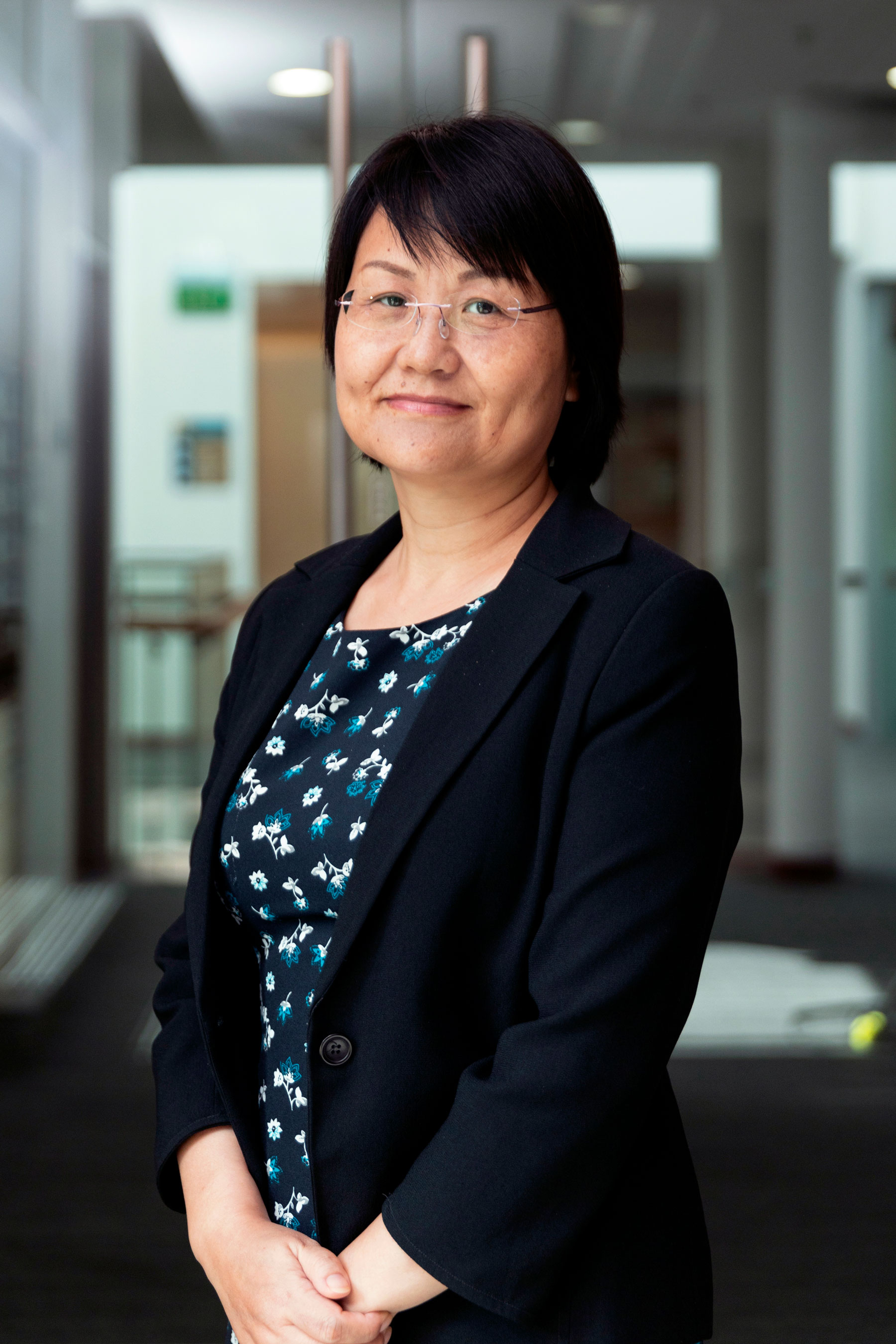
Feature on Huang Fali, Associate Professor of Economics
School of Economics, Singapore Management University
Designing good institutions for a more fulfilling life
From the design of political institutions to the organisation of smaller social units like the family, Associate Professor of Economics Huang Fali’s research areas reflect similarities in intriguing ways. In this interview, she shares more about her passion for economics and how she hopes to contribute to the progress of humankind through her work.
Globalisation has created generations of “global citizens” and for some of these people who have lived within more than one culture, the increasing polarisation of the world has brought conflicting emotions.
One of the most salient issues in the world today is the relationship between the United States (US) and China. Huang Fali, Associate Professor of Economics, Singapore Management University, is someone for whom this issue is close to her heart. “I was born and raised in China but obtained my PhD in the US. Personally, I love both countries and cultures, so I feel like I’m a child caught between divorcing parents,” she says.
Indeed, she has been compelled to address the current dynamic between the two countries in a systematic and rigorous way in her research. She explains, “I am motivated to facilitate a deeper understanding of what’s going on in the world and to carry out research that is relevant to society.”
Coevolution and synergies of institutions and development
Huang’s area of focus is on the design of political institutions for economic development. She also examines the impact of cultural traits like collective versus individualistic orientation within areas such as development, income inequality, and political regime.
“A unifying theme of findings is that political, legal, and educational institutions must fit to local society, especially to its economic developmental stage,” she says. In a series of papers, she provides theories and evidence that the ongoing conflict between the US and China lies more in distinct developmental stages and cultural beliefs than rigid ideologies.
“When an economy is still heavily reliant on agriculture or other forms of natural resources, then it is not easy to establish or sustain a well-functioning liberal democracy. Imposing a particular format of democracy on a country that is not ready yet, either in terms of economic development or cultural beliefs, does not improve economic growth,” she says, adding that her recent paper actually suggests that China is prepared for democratisation if you look at it in terms of economic development. “However, one must consider its large size and regional discrepancies for an overall assessment of such a political transition.”
Seek to understand family as an institution
Huang’s research spans a vast range of societal topics. While they may look widely distributed across various fields, she explains that their coherence comes from the fact that they seek to understand how humans organise societies. “I am interested in broad governance issues, and I find that you can often draw parallels between how a country is run, and how a family is managed,” she says.
For example, parents with young children might be concerned about whether it is appropriate to spank them occasionally for disciplinary purpose. “My research has found that for young children who can’t yet tell right from wrong through reasoning and self-discipline, an authoritative parenting style may be more appropriate. This is similar to my findings discussed above on authoritative political regime being more compatible with a less developed economy, where the citizens are often less educated or skilled,” Assoc Prof Huang says.
Love and matchmaking in family formation
Sometimes, the unique application of well-known economic theories can bring unexpected and interesting insights. In a paper titled “Love and Money by Parental Matchmaking: Evidence from Urban Couples in China”, Huang leverages the principal-agent theory to explain how parental involvement in marriage matchmaking may distort the optimal spouse choice – because parents are “relatively more willing to substitute love for money” than the child.
She explains that when it comes to matchmaking, it would be assumed that altruistic parents want to find the best partner for their son or daughter. On the surface, it seems that a specific matching format should not matter. Yet, Huang says, “A hidden problem is that there are many dimensions in characterising the best spouse. For example, a handsome guy as a potential husband may not bring much happiness to the daughter’s parents compared to a rich guy. Similarly, a good-tempered and kind wife could offer more benefits to a the large family than simply being physically beautiful. The optimal trade-offs between these two types of characteristics thus differ for parents and children.”
This implies that if parents are delegated to find a spouse for their daughter, they might place more emphasis on income than looks. “We indeed find strong support for this from empirical results based on a large survey in China,” Huang confirms, adding that the result resonated with international conference audiences, often raising chuckles and nods when it was presented, and received media coverage from countries including China, India, and Israel.. Similar tradeoffs and distortions may prevail in the formation stage of other institutions.
Questions beyond economics
Huang’s heart work in economics comes from her passion for humankind and her desire to contribute to its progress. “As a society, we emphasise a lot on material stuff, such as the gross domestic product (GDP), and have been neglecting emotional wellbeing and social cohesion. It’s time for us to shift our thinking and focus on bigger questions that we are struggling to answer – such as how do we ensure that every individual is treated as a full human being rather than just human capital? How do we achieve freedom both at an individual and a societal level?”
Through her research and teachings, Huang hopes to inspire her students and beyond to rethink what it means to have a meaningful life. “Even though I am an economist, I strongly believe that in order for society to move forward and become a kinder place, we need to focus on the bigger picture, and not just narrowly-defined economic outcomes,” she says.
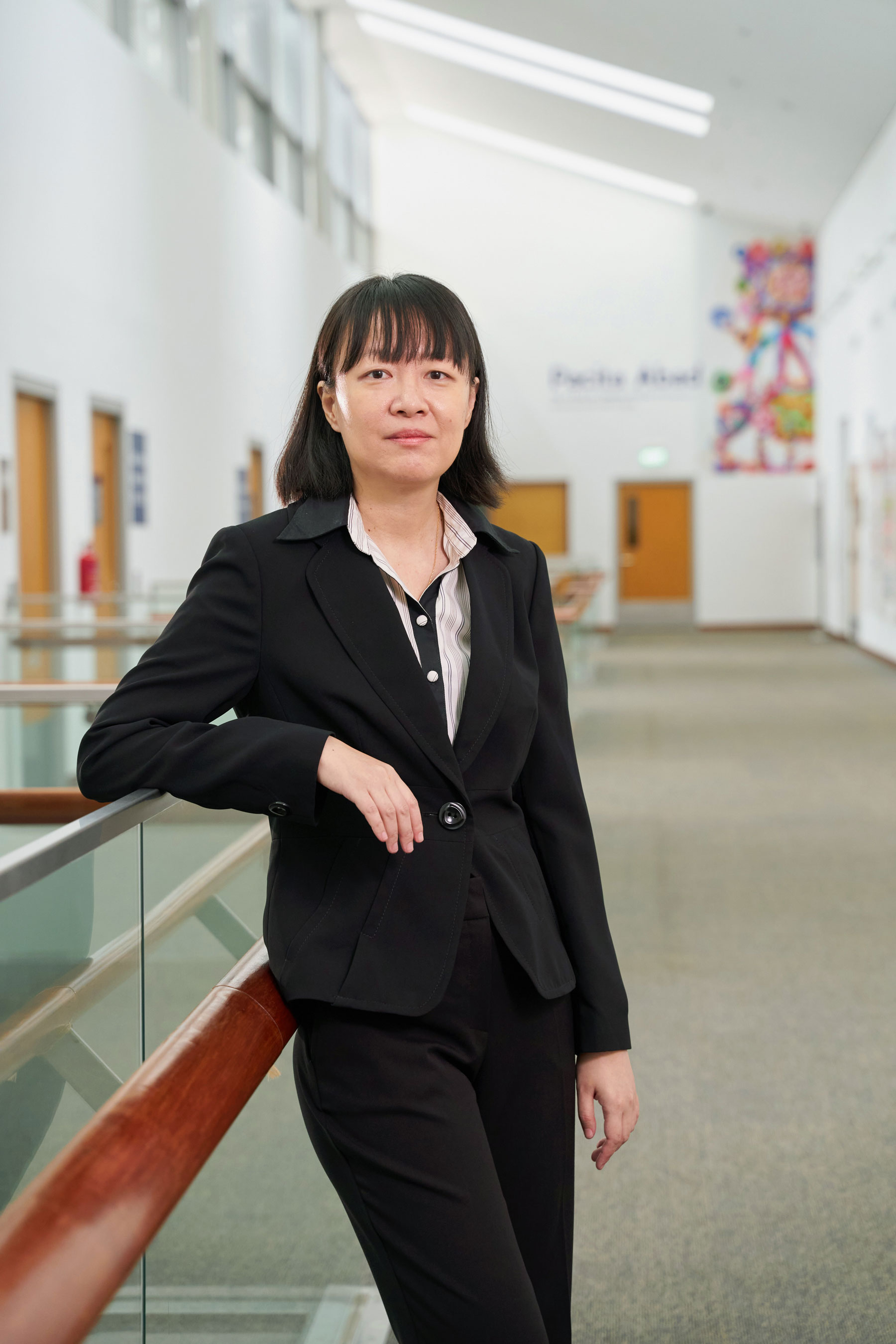
Feature on Christine Ho, Associate Professor of Economics
School of Economics, Singapore Management University
Exploring family dynamics and designing policies
From female empowerment to declining birth rates, family dynamics are adjusting to economic and demographic changes – and policymakers need to keep up. Through her research, Christine Ho, Associate Professor of Economics at the SMU, looks at the shifts affecting global family units and the policies that can improve welfare on these issues.
Fertility rates have declined by around 50 per cent over the last 70 years. In 1952, an average family would have five children; nowadays, they have fewer than three. Some of the causes attributed to this decrease include women’s economic empowerment through higher education and workforce participation, and the increased cost of raising children.
“It’s a common global trend – with economic development, we tend to see increasing female participation in the labour force, coupled with declining birth rates,” says Christine Ho, Associate Professor of Economics at Singapore Management University (SMU). “As the main burden of caring for children typically falls on women, there are important trade-offs between female employment and child care.”
Ho sees the issue as an important question within the realm of family economics and public policy. She explains that there is currently a lot of room for husbands and policymakers to step in and provide help to ease this problem of double shifts for women. “Women have to work full-time, and when they get home, they also have to clean, cook, and look after the kids – this is a burden that affects half of the world’s population,” she adds.
One tool that many policymakers around the world are leveraging to address the issue is through childcare subsidies. “It is now increasingly common for working parents to put their children in daycare – so it is important to ensure that day care is accessible, affordable, and of good quality.”
Ho elaborates that it is not just about freeing up time for women to work. It is essential that during these important formative years, children are able to develop cognitive and social skills that prepare them for school. “Accessible and affordable daycare needs to be of good quality to ensure that children are not missing out either,” she adds.
In one of her research papers, Ho looks at how governments can design efficient childcare subsidies for their population. “The main takeaway was that it would be beneficial for families and society if governments were to subsidise formal daycare for low income working mothers. A qualitatively efficient way to do this would be through ‘sliding scale childcare subsidies’, which means that the subsidy rates decline with income. Lower income mothers would receive higher subsidy rates compared to higher income mothers.”
The family as an economic unit
Ho’s work lies in the intersection between family economics and public policy. “It is an interesting area because economics is about decision-making. As human beings that live in a society, we do not make decisions in a vacuum. You would typically take into consideration how your choices affect the people around you – the closest of which would be your family such as parents, children, and so on.”
For Ho, one of her main research interests is family support and exchanges between different family members and generations. In a recent paper, she highlights how parents often intend to leave larger bequest shares to coresident children and to children who provide greater financial support. It was also found that parents intend to bequeath more to children in whom they confide frequently, whereas those they rarely confide in receive more bequests only if they provide greater financial support.
The study uses data from the June 2018 Singapore Life Panel and focuses on a sample of 4,125 adult children and their middle-aged and older parents. “The results suggest that parents may interpret physical and emotional proximity to children as signs of filial piety for which they may reward them. Meanwhile, detached children may earn such rewards through financial support,” says Ho.
She adds that the research demonstrates the existence of coresidence-for-bequest and money-for-bequest exchanges between adult children and their parents. In the future, the arrangements may translate into caregiving-for-bequest dynamics when parents become elderly. “These have broader implications for both individual and societal well-being, given that many countries are facing a rapidly ageing population now.”
Changing family, changing norms
The family unit forms the basis of society, which also means that the notion of family would evolve with the times and norms. Besides demographic shifts – such as declining birth rates and ageing populations – and women’s economic empowerment, changing social values also impact how families are organised within society. In recent years, there has been greater acceptance of family structures that deviate from the traditional nuclear family unit comprising a heterosexual married couple and their biological offspring.
Ho explains that these new trends, be it single parenthood, cohabitation, or same-sex unions, tend to be intricately intertwined with social norms. For example, in Asian countries like Singapore or South Korea where fertility rates are low, it's rare for people to have children out of wedlock. Whereas in western countries like the United States (US) or Scandinavian countries, where fertility rates are higher, it's relatively common for people to have kids without getting married.
“We can see interesting comparisons between Singapore and the US in this aspect. In Singapore, you need to be either married or single and above 35 years old to purchase subsidised public housing. Single mothers are also ineligible for the full baby bonus scheme from the government. This is in contrast to the US, where single mothers tend to receive more generous benefits compared to married parents,” says Ho, adding, “This could be an interesting avenue for research, because given that people are more accepting of single parenthood today, perhaps the government could look into revising the programmes to give them more support.”
However, she emphasises that it would all depend on how accepting a society is of alternative family units. “Oftentimes, single parenthood is associated with worse outcomes for children. Nevertheless, regardless of individual values, we need to be mindful that some of these single parents could be facing very painful circumstances. For example, some may have suffered from domestic violence and left their partner as a result.”
She explains that this is part of what she hopes her research can shed light on and bring a positive impact to. “Society is made up of diverse groups of people, and we need to be careful not to generalise or stigmatise individuals that may not be aligned with current societal norms. Through my work, I hope to encourage people to rethink and constantly question how family-related policies can be further fine-tuned, so that we can make society a more welcoming, compassionate space for everyone,” Ho concludes.